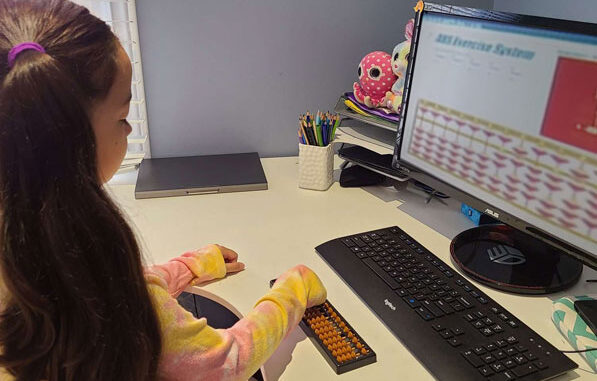
Creating positive learning habits at any age can be difficult, but for children, it can be especially challenging. In addition to learning whatever it is children are trying to learn, they also have to learn to develop a growth mindset.
A growth mindset goes beyond good learning habits. It includes behaviors that aren’t only beneficial to information absorption and retention, but also, to the emotional and mental well-being of the student.
Positive Learning Habits in Action
I’ve been an educator of young children for over a decade. During that time, I’ve learned that nurturing a child’s confidence and emotional needs is just as crucial to learning as making sure that the child understands the material. In fact, the latter rarely occurs without the former. That’s where the partnership of teacher and parents play an important role in helping students to develop a healthy growth mindset and learning habits.
So, with this more holistic view of learning in mind, here are my tips to help your children create positive learning habits.
5 Strategies to Create Positive Learning Habits
1. Maintaining the Growing Mindset in Children
In the natural state, children learn new things without any hindrances. Babies do not have to learn how to smile, cry, copy an adult’s expression, grow their physical body, crawl, talk, etc. New learning comes naturally to them until their growth mindset begins to be limited by their environment.
Limiting beliefs can start as early as the first memories of a child trying something new and being stopped by an adult without proper reasoning and understanding. Slowly, their daily life begins to chip away their curiosities. Curiosity is important for learning and maintaining a growth mindset.
2. Create a Calm Environment
Removing stifling expectations from the learning environment is one of the best ways to set the stage for optimal education. This isn’t to say you shouldn’t set goals, but many children benefit from goals that are more attitude oriented, not performance-based.
For example, when a child is learning how to walk, as parents, we encourage them. We motivate them to keep trying their best, but we never give up or discourage them from trying to walk. No parents would expect their child not to be able to walk. No parent would think it is fine for their kids not to learn just because they fall and hurt themselves. Parents cannot expect their children to learn on a fixed schedule. What’s more, they should not compare their child’s progress to other children’s. Rather, parents should create a positive learning environment for their children. The confidence in learning new skills is natural to children until their growth mindset is somehow limited or discouraged by their environment.
When we leave young children to learn on their own without proper guidance, they might create limiting beliefs. Why? Because they didn’t have the proper explanation as to why they failed in their first attempt. They just gave up on anything they tried once, and could not do. Learning requires continuous, repetitive trying to acquire new skills. With a limited mindset and a lack of a supportive and encouraging environment, children will encounter difficulties in new learning.
3. Keep Lessons Individualized
This is pivotal to your child’s success. Just like most adults will have trouble focusing through a long presentation (if the presentation is not engaging), most children will have trouble concentrating through a long lesson due to the lack of engagement.
With engaging activities and a positive growth mindset, students will have no problem being engaged in class. If learning is like playing and individualized to the needs of the child, even over an hour of lesson becomes a breeze for children who have the curiosity to learn. They will develop a growth mindset that involves understanding that their newly acquired knowledge requires practice but will eventually become a special skill that they can proudly and confidently call their own.
4. Start Small
10-15 minutes a day is an excellent amount of time to spend practising a certain skill — especially when the skill may be perceived as difficult by your child.
Take math, for example. I have been teaching a mental math program that helps children understand mathematics through visualization. I’ve seen children who struggled with traditional math excel beginning with a mere 15 minutes a day of abacus training. I’ve found 15 minutes is enough to nurture learning and gradually progress (as children begin to increase their focus) from minutes to an hour.
The challenge for students and adults in today’s society is the lack of mental focus; without that, they become restless.
Mental focus is a skill set that requires practice and dedication to develop.
5. Encourage Interest-Based Learning
There are things we need to learn: reading, writing and basic math, for example. But outside of these core subjects — and even within this core framework — we should encourage children to learn through their own interests, which will almost always be more engaging.
For example, I’ve encouraged my students to take their image abacus skill (visualize the abacus in their mind) out into the real world to tally pine cones or chipmunks or flowers in a planter. Likewise you can encourage children to learn about geology by looking at rocks on a shoreline. You can help develop their analytical thinking through reading and talking about their favourite story. You can improve your child’s reading skills by sounding out signs on the way to the park.
The point is to remember that not all learning needs to happen in a classroom setting.
Share Your Tips for Creating Positive Learning Habits
I’d love to hear your tips for helping your children create a growth mindset and positive learning habits. If you are curious about our children’s Abacus program, please email [email protected] Subject: Abacus Class. I’m happy to lead you and your child through a complimentary discovery lesson so you can see Abacus learning in action.
Also see my other articles!



